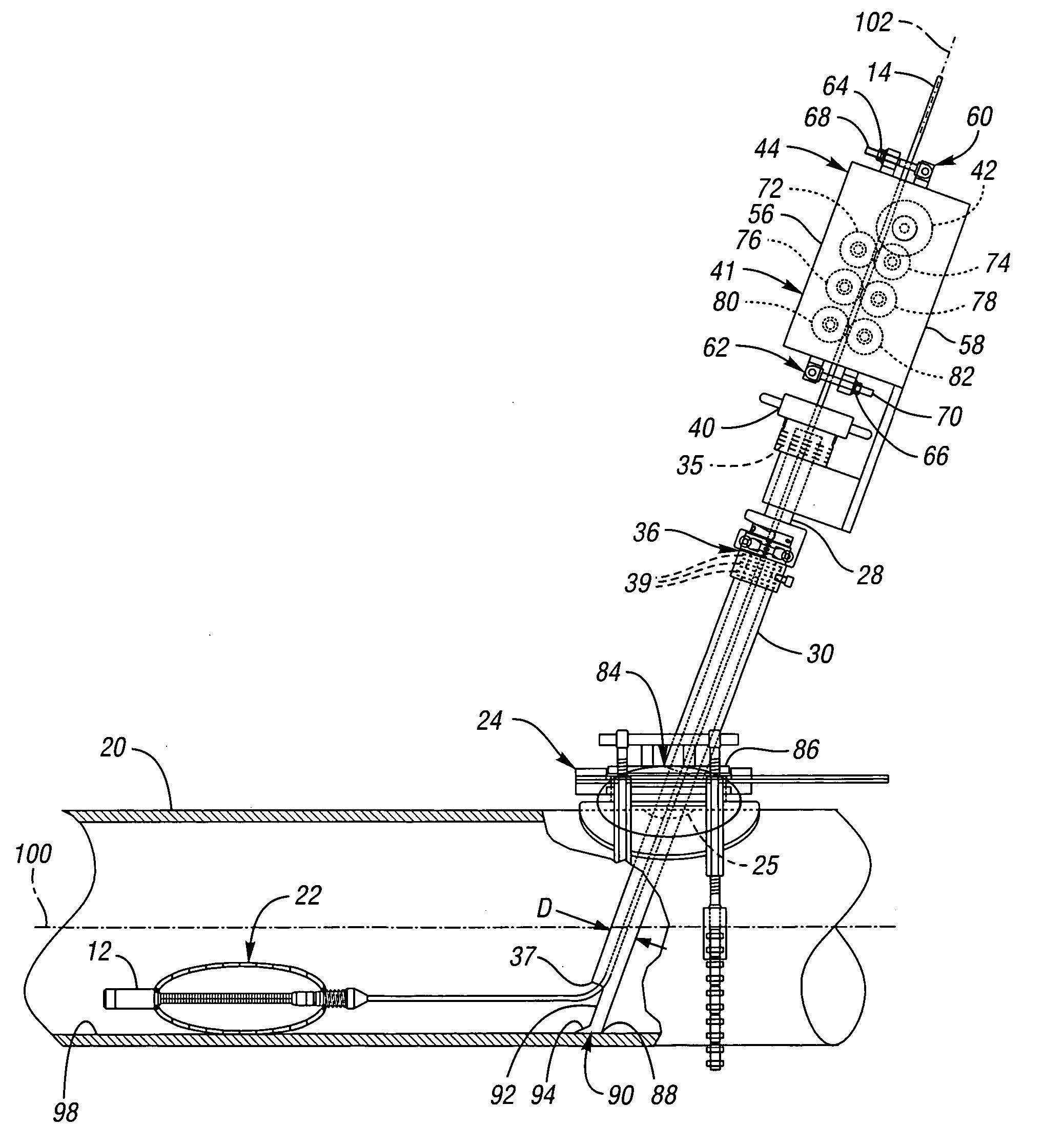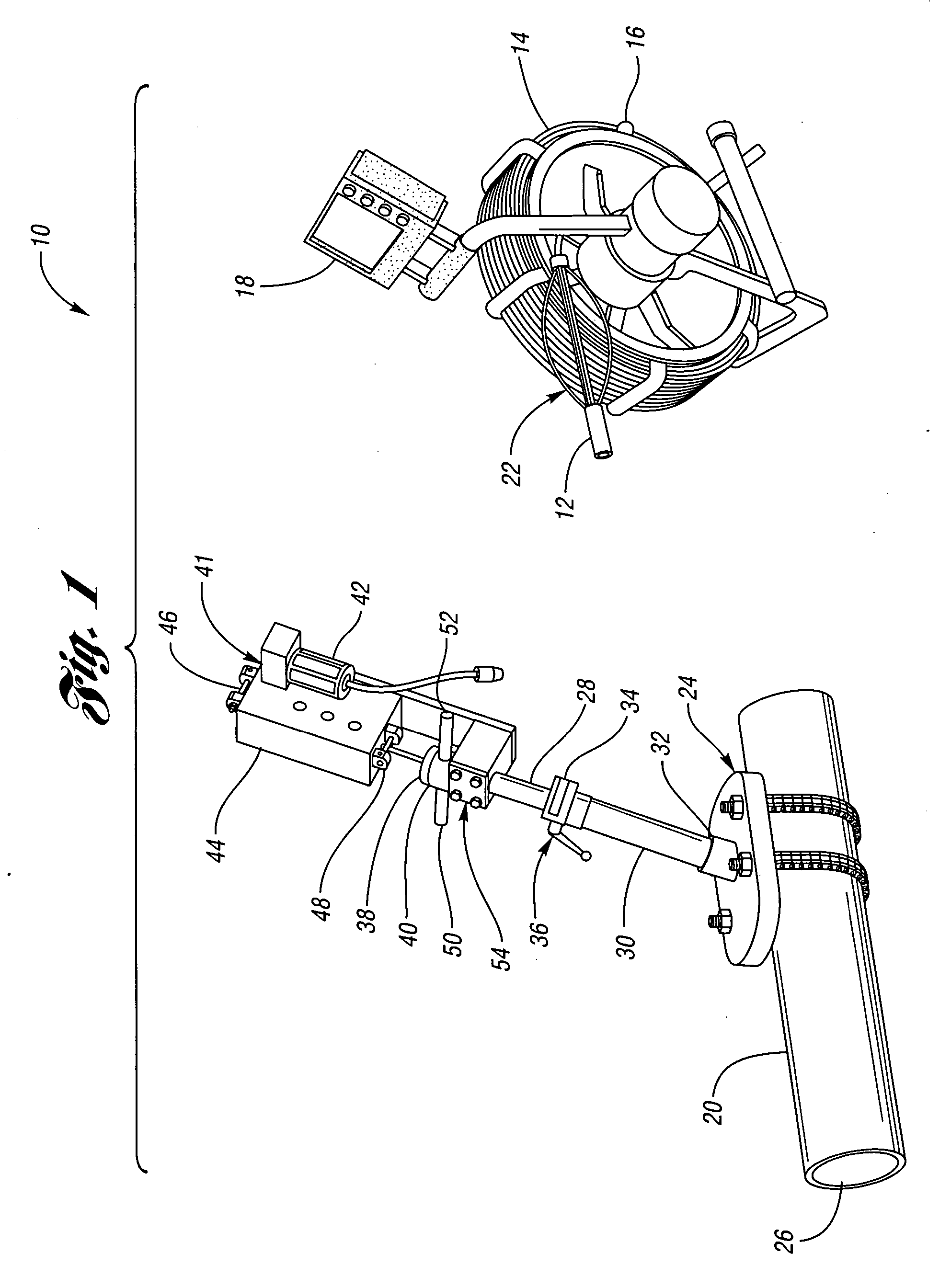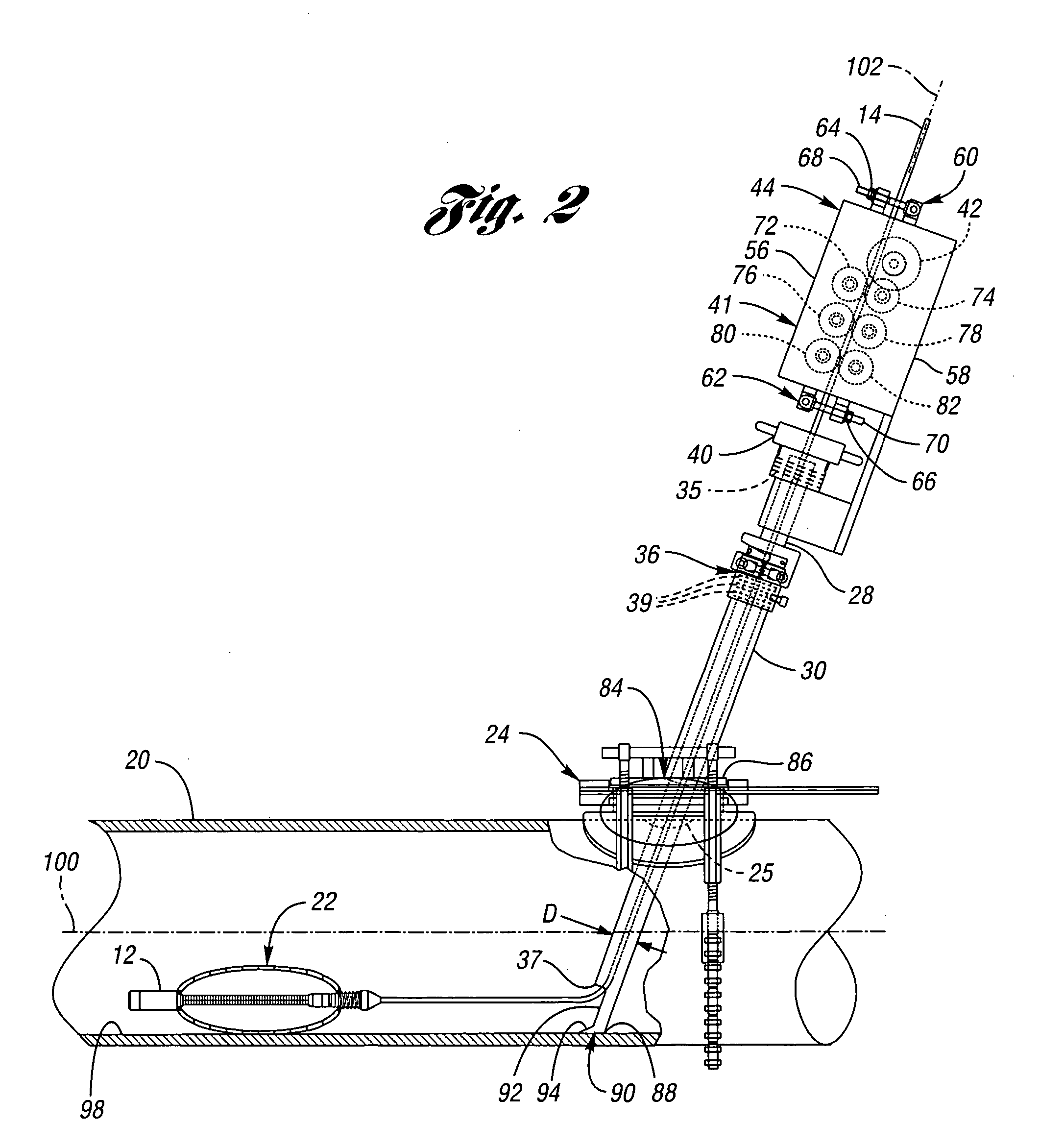Pipeline inspection system
a technology for inspection systems and pipes, applied in television systems, diaphragm valves, instruments, etc., can solve the problems of undesirable, two operators performing inspection tasks, etc., and achieve the effect of facilitating the entry of guide members, facilitating automatic outward movement of portions, and facilitating inward movement of portions
- Summary
- Abstract
- Description
- Claims
- Application Information
AI Technical Summary
Benefits of technology
Problems solved by technology
Method used
Image
Examples
Embodiment Construction
)
[0019]FIG. 1 shows a partially schematic perspective view of a pipeline inspection system 10 in accordance with one embodiment of the present invention. The inspection system 10 includes a camera 12 which is attached to an elongate flexible guide member, or push rod 14. The push rod 14 is wound around a spool 16, which has a video display monitor 18 conveniently attached thereto. The monitor 18 is electrically connected to the camera 12, for providing images from inside a pipeline 20. As explained in detail below, a positioning system 22 is disposed between the camera 12 and the push rod 14 for positioning the camera 12 within a pipeline, such as the pipeline 20.
[0020] The pipeline 20 may be a high-pressure gas pipeline, for example, containing gas at 60 pounds per square inch (psi). To facilitate entry into the pipeline 20, a valve system 24 is used to provide selective access to an opening 25 in the pipeline 20. Any valve system that provides access to an interior 26 of the pipe...
PUM
 Login to View More
Login to View More Abstract
Description
Claims
Application Information
 Login to View More
Login to View More - R&D
- Intellectual Property
- Life Sciences
- Materials
- Tech Scout
- Unparalleled Data Quality
- Higher Quality Content
- 60% Fewer Hallucinations
Browse by: Latest US Patents, China's latest patents, Technical Efficacy Thesaurus, Application Domain, Technology Topic, Popular Technical Reports.
© 2025 PatSnap. All rights reserved.Legal|Privacy policy|Modern Slavery Act Transparency Statement|Sitemap|About US| Contact US: help@patsnap.com



